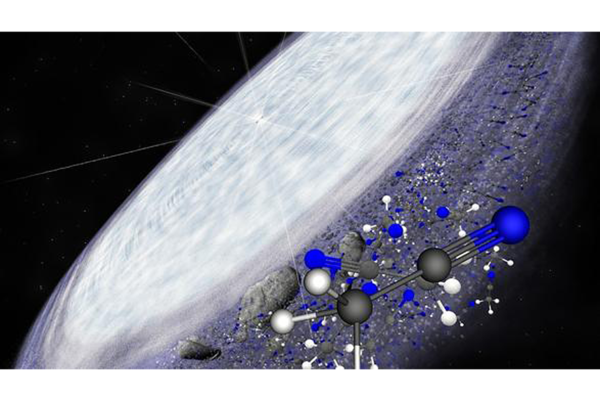
Scientists claim that the recent discovery of life’s building blocks in a young star could show that the conditions that create organic molecules can happen all-across the cosmos.
Astronomers detected two compounds in the disc surrounding a star. Known as MWC 480, it is located in a region that is considered similar to the Kuiper Belt around our own star.
The Kuiper Belt is a collection of frozen comets and planetoids, located beyond the orbit of Neptune.
“In the Solar System, complex organic molecules are common on many planets, moons, comets and asteroids. Comets are most relevant point of comparison for this study. They preserve a record of what the young Solar System looked like chemically and should have a similar chemical composition to the MWC 480 disk which is chemically comparable with our Solar System” Karin Öberg, lead author of the research, Assistant Professor of Astronomy at the Harvard-Smithsonian Center for Astrophysics, told Sen in an email.
“We now have even better evidence that this same chemistry exists elsewhere in the Universe, in regions that could form solar systems not unlike our own” said Öberg in a statement.
A carbon-based organic molecule called methyl cyanide, as well as a simpler version of it called hydrogen cyanide, were found in the disc by scientists using the Atacama Large Millimeter/submillimeter Array (ALMA). MWC 480 is so young that the observatory that found the molecules has not been able to detect any planets or proto-planets yet.
The star has formed out of an interstellar cloud of dust and gas, which astronomers have long known to be ripe in organics. Cyanides are abundant in clouds and are considered building blocks for life because they have bonds of carbon and nitrogen; these bonds are the basic components of amino acids, proteins and hence life.
But the discovery of cyanides in MWC 480 was particularly intereeing because a young star’s environment is much more… rigorous… than that of an interstellar cloud.
The temperature and radiation in and around a star is so intense that it was not clear if the chemical bonds could survive. However, ALMA had found more of these molecules in this area than in interstellar clouds, proving that these discs are able to form organic molecules particularly briskly.
As telescopes become more sensitive, astronomers are hopeful that they will one day be able to detect organic compounds in planets well beyond our own Solar System. However, Öberg explained to Sen that “It will be difficult to search for similarly complex molecules toward more evolved systems since the gas sublimating from debris in Kuiper belt analogs is unprotected from the stellar radiation field and thus quickly dissociates. Since this was a single molecule in a single system we will next try a more systematic survey to explore around which kind of stars, which kind of complex molecules are common.”
You want to support Anonymous Independent & Investigative News? Simply, follow us on Twitter: Follow @AnonymousNewsHQ
Source: http://www.csmonitor.com/Science/2015/0409/Astronomers-detect-organic-molecules-





Awsome!!!!
im really likeing this news source… a lot of people have given you guys crap cause of some of the things you choose to cover such as the article about the girl that lived among monkeys that you recently posted, which I have to admit was deff a little strange but for the most part you guys seem to be relatively unbiased. I would like to see more coverage of things political especially with the upcoming elections next year. anyway keep up the good work =P